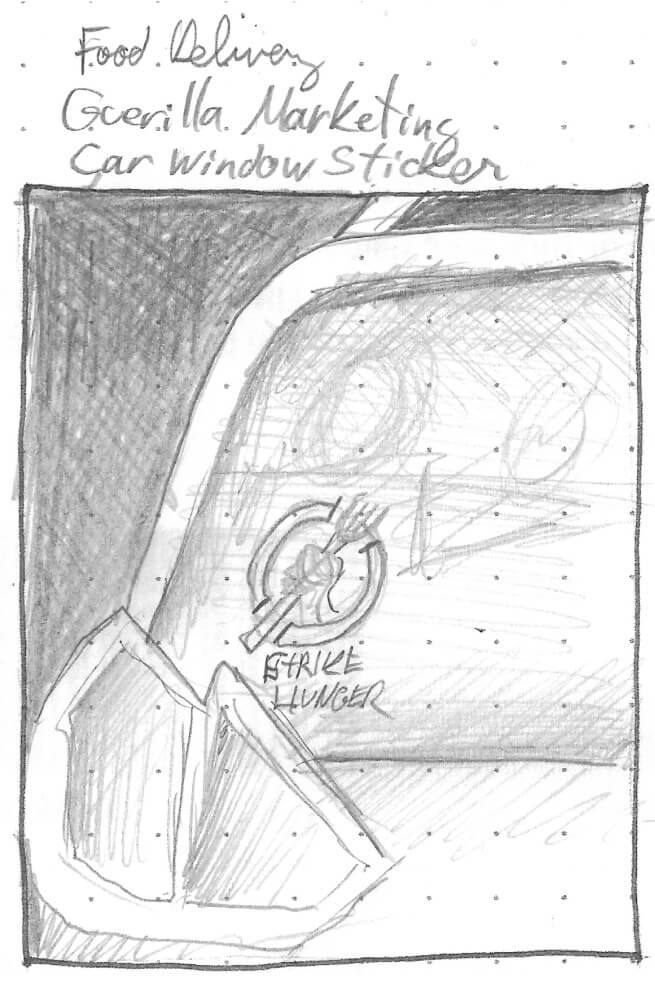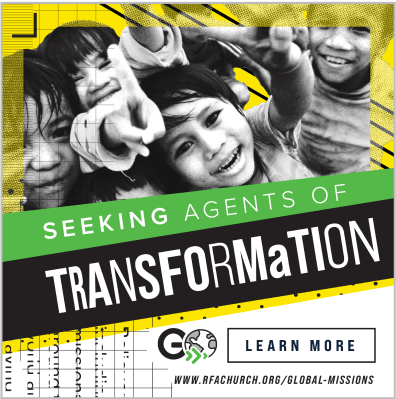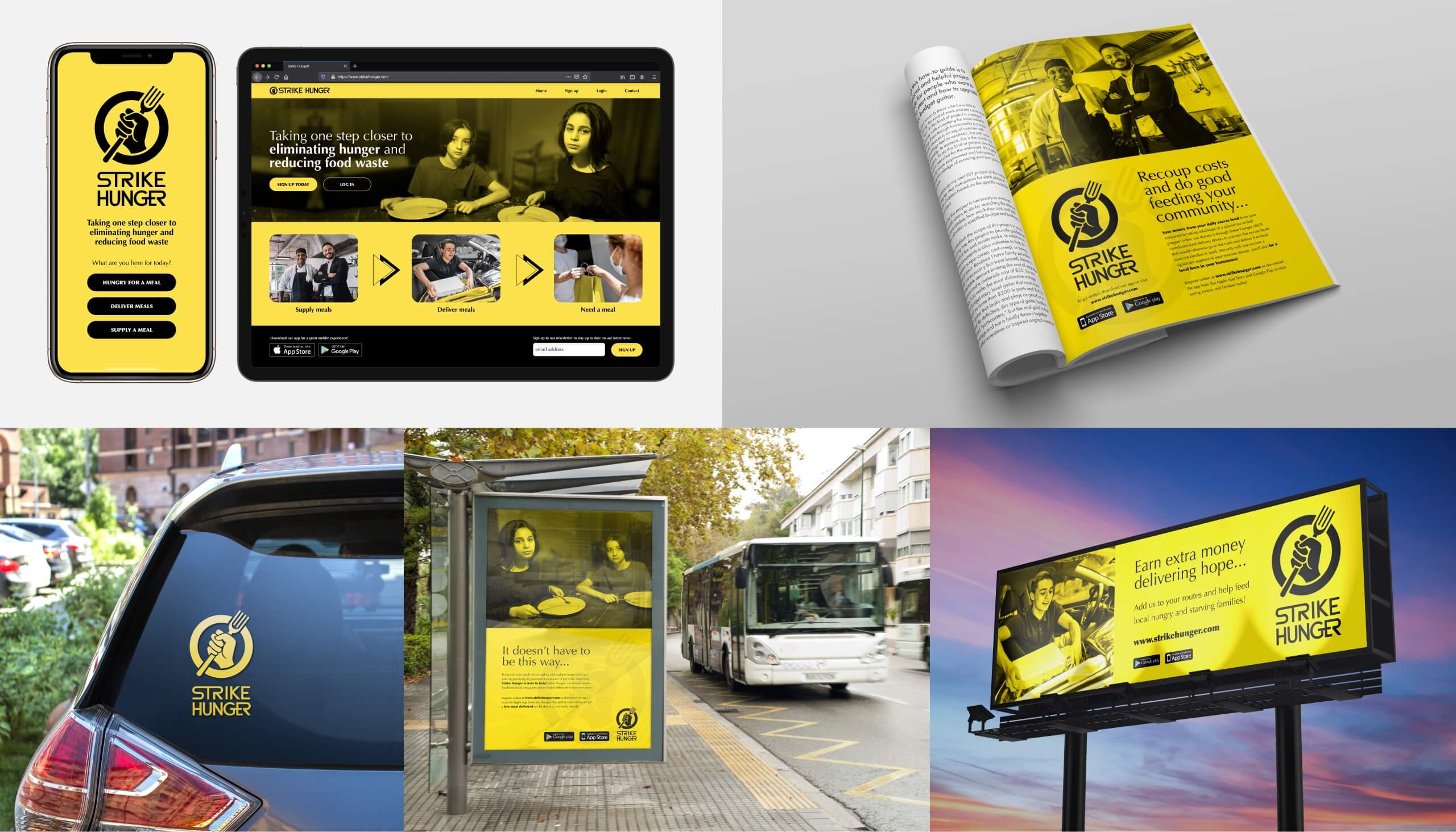
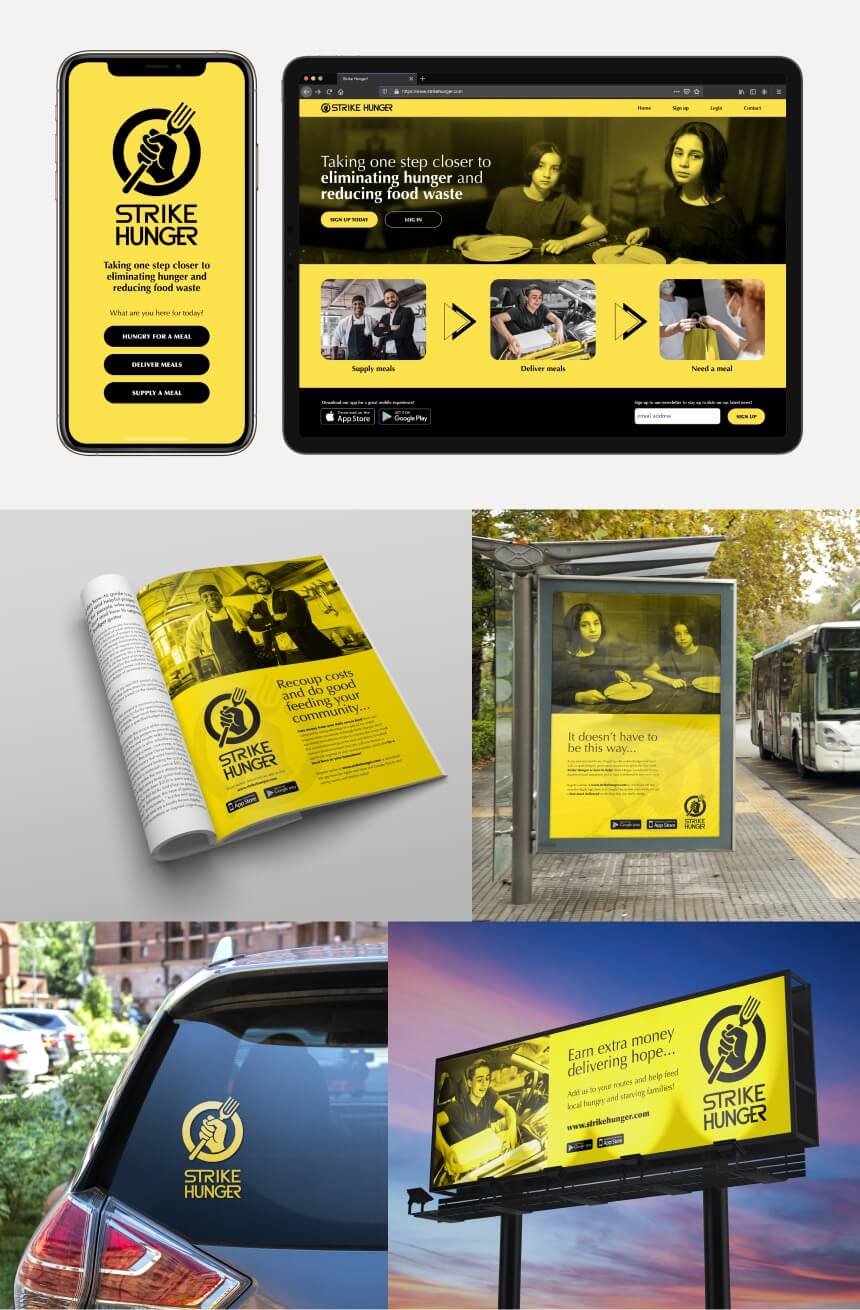
Research and Proposal
The Issue
With the Covid-19 pandemic in full-swing with no signs of slowing down in our country, struggling families across the United States (and dare say the world) are in a conundrum that is essentially a looping argument of dependencies that involves employment/unemployment, childcare, education, safety, hunger, and sustainability.
The very necessary measure put in place to prevent further outbreak, the nation-wide quarantine, is also what brings about these unfortunate issues of consequence.
The interlocking and compounding causes and effects of the pandemic and resultant lock down form a wheel with many spokes, component issues of the set of unfortunate circumstances of survival that threaten families’ stability and capability to function and live. These form compounding factors that can lead families into utter shutdown, ruin, bankruptcy, or homeless, unable to sustain life and household. There are many families that may have employment, but due to quarantine measures, resultant shutdowns, safety concerns, and the fact that kids must stay home and do remote learning, they can’t go to their job to which is then at-risk. Then there are those with the same factors who have lost their job as a consequence of those factors or shutdowns. Currently the unemployment rate is 6.9% for October 2020 but spiked as high as 14.7% in April 2020 (U.S. Bureau of Labor Statistics). This significant amount of unemployment in the US is leaving families without resources to survive and is like a downward spiral or snow-ball effect. In addition to families and children, the elderly are a significant part of those affected.
Despite government stimulus, families are still not able to make ends meet. It is especially those single parent families who find themselves unemployed who have the greatest task of survival. Many are stuck in that their kids must be home, but must be supervised, so they are unable to take advantage employment opportunities, compounded by the fact that there are less opportunities. In this situation, families find themselves unable to pay their rent, their bills, put gas in their cars, afford their car payments, and find themselves without means to buy food to feed the family. This is a very vicious and concerning cycle of circuitous cycle of events. This is not a new cycle, per se, before the pandemic, families struggled with similar factors, but the nature of the safety issues, lock downs, and layoffs, means that this cycle is in effect, to a greater degree, and upon a greater number of people. This has put a strain on what welfare systems and outreaches are able to support, even more so given the unexpected time frame and the uncertainty of any outcome.
Narrowing the Scope
While it would be great to solve for the whole of this situation, there are too many uncontrollable variables until a vaccine or cure is found for Covid-19. What can be done is to identify some part of this cycle where resolution or at least relief can be had for these most severely affected families with children who face the unsolvable riddle of work, childcare, school, safety, hunger, rent, bills, etc.
So how are people getting by and where is there the greatest or most dire need to look for? For our general safety, depending on one’s location, there are varying degrees of quarantine for our safety, which is a part of a preventative solution (and a problem).
Fortunately, the government is aiding with waves of relief packages, including stimulus checks, which helps folks pay bills. School is conducted online, where Chromebooks are made available for kids. As of September 4, 2020, the CDC put in place a measure to “temporarily halt residential evictions to prevent the further spread of COVID-19.” (Federal Register) With childcare centers and schools shut down, there’s no childcare for those who are employed, so that is one identifiable area where there is, as of yet, a solution—the problem still exists because of the nature of spreading the virus and safety concerns. While many of the component issues are being addressed (except for the issue of childcare), there is one last issue from the list above that needs attention and is a very significant issue…hunger.
Hunger is on the most basic level of survival needs and it is a constant need throughout the day. Without food, none of the other issues matter, because if we don’t eat, we can’t deal with any higher order rungs of survival. Food is essential. If hunger is where families are stuck, then they won’t be able to climb out of the hole of poverty, because it comes down to life or death, rather than inconvenience. In 2019, before the Coronavirus pandemic, there were more than 35 million people in the US struggling with hunger, and now, during the pandemic, there are more that 50 million people who are struggling with hunger. (Feeding America) This is a 63% increase in one year. The hardest hit, Alabama, shows up to 48% of its population experiencing some degree of food insecurity. (Reinberg) This means that the greatest threat for those who are food insecure is not necessarily dying from getting the Coronavirus, but it is dying from starvation and hunger.
The current network of SNAP and EBT were barely keeping up with hunger in 2019, so in 2020 those agencies and food bank are not adequately prepared to reach everyone in need. The same is the case for most foodbanks who don’t receive enough funding from state and federal sources to keep up with the demand. According to Elaine Waxman, a senior fellow at the Urban Institute, “Food banks are overwhelmed. We’re in a world of hurt.” (Reinberg) What’s more, scarcity is a potential threat and is, to some degree, a contributing factor, especially when individual families with food are stockpiling for the apocalypse and not donating to foodbanks as much. What can be done at this point?
Identifying Challenges
To begin to find a solution or at least provide remedy or relief to some portion of the issue, consider that with traditional measures of hunger relief tied up, underfunded, and under supplied, there is a need to find an alternative means of excess food supply—so that is challenge number 1. Next, considering the variables of the pandemic, distribution of surplus food stocks is also an issue, since many of the in-need families and elderly have severely limited resources, including the costs and availability of transportation to go to where food may be made available, so that is challenge number 2. Assuming that there is a solution for challenges 1 and 2, there is the third challenge of pulling together all of the necessary components and variables for coordinating available food to those in need via transportation and in a meaningful time frame, hunger doesn’t like to wait—this will require a savvy technological component to this solution. With these top 3 challenges established, it is time to identify potential solutions to these individual components to create a clear pathway to addressing the net effect of the issue and easing the burden of hunger in the US.
Challenge #1 – Alternate Food Sources
With foodbank resources straining under the pressures of the demand, one potentially viable alternative to an available food supply is restaurants. More specifically, it is the food that restaurants discard at the end of the day, food waste or excess food as it is called, that could otherwise go to feeding those in need. Sometimes these are wrong orders, abandoned orders, leftover food prep, as well as raw food materials. Grocery stores and farms are potential candidates as well for their propensity to discard nearly expired foods. The benefit to their participation in the HungerStrike program would be in the form of tax write-offs for the retail value of the donated meals and food. If conveniently facilitated this could be a significant recoup of capital from taxes for the partnering restaurant, grocery store, of farm over time, plus they would be able to claim and display their part in ending local hunger and integrate it into their marketing or social campaigns with an identifiable logo representing HuingerStrike. Reciprocally, the participants would be featured as cornerstone partners on the HungerStrike website and social media to provide for cross-marketing opportunities.
Challenge #2 Solution – Distribution
With the rise of entrepreneurial drivers working for Grub Hub, Postmates, Door Dash, and Uber Eats, there is an existing distribution network in place that could be leveraged, and piggy backed upon. These drivers work on a 1099 self-employed status, receive no benefits, and being heavily taxed as a result of the 1099 status. Despite recent legislation in California maintained this status quo, so for the present time, they remain as at will, self-employed 1099 workers. What could really benefit them is having additional deductible write-offs. If they were to charitably participate in the StrikeHunger food network, the cost of the delivery would be a charitable write-off for them. If they make a daily effort to do one or more of these charitable trips during the course of the day when contributed food is made available, then this could significantly off-set their tax-liability and keep more of the money they earn (the value of the delivery plus the deductible mileage on their vehicle). When they pick up an order for a regular paying customer, they could also pick up one of these charitable meals to piggy-back on an existing delivery, potentially offsetting some of the proportion of the cost of the charitable delivery. If the engagement were not just on a per driver level, but if a corporation like Uber Eats or Grubhub were to corporately engage with this program, they could get all of the tax breaks and offer their drivers more or all of the fees they would normally collect. In addition to this, is the pride in themselves for contributing to society and being a part of the solution.
Challenge #3 – Coordinating It All
With the rise of entrepreneurial drivers working for Grub Hub, Postmates, Door Dash, and Uber Eats, there is an existing distribution network in place that could be leveraged, and piggy backed upon. These drivers work on a 1099 self-employed status, receive no benefits, and being heavily taxed as a result of the 1099 status. Despite recent legislation in California maintained this status quo, so for the present time, they remain as at will, self-employed 1099 workers. What could really benefit them is having additional deductible write-offs. If they were to charitably participate in the StrikeHunger food network, the cost of the delivery would be a charitable write-off for them. If they make a daily effort to do one or more of these charitable trips during the course of the day when contributed food is made available, then this could significantly off-set their tax-liability and keep more of the money they earn (the value of the delivery plus the deductible mileage on their vehicle). When they pick up an order for a regular paying customer, they could also pick up one of these charitable meals to piggy-back on an existing delivery, potentially offsetting some of the proportion of the cost of the charitable delivery. If the engagement were not just on a per driver level, but if a corporation like Uber Eats or Grubhub were to corporately engage with this program, they could get all of the tax breaks and offer their drivers more or all of the fees they would normally collect. In addition to this, is the pride in themselves for contributing to society and being a part of the solution.
Pulling it Together
Everything will be centric to the app and integrated website that I will hereafter refer to as “the platform.” The platform will be the main point of contact and coordination for all parties involved in (whether contributing, transporting, or receiving).
While this service will not provide stockpiles of food to fill one’s pantry with food for days, it will provide an invaluable and targeted relief for those who have a temporary or ongoing need, are immediately hungry, and have no other means of food options. To be a recipient of excess food, one must register with the service via the platform initially.
One important consideration with this is authenticating that someone is truly in need and is not simply taking advantage of and gaming the system. One possibility is for the potential subscribers to provide case or any other validating numbers that coordinate with the local health and human services who establish who is in need. This would be one way to determine eligibility, if they are already receiving aid. This will be part of the scope of this effort, that it is a means to help where food stamps and SNAP fall short. In some instances, it may be a valuable service to those who are newly attempting to get public assistance benefits but are having to wait due to the latencies of the process of eligibility determinations, and they need hunger relief in the meantime. Perhaps in these circumstances, they would submit proof that they have applied.
Once a subscriber has gone to the website or downloaded the app, they would need to complete their profile. Here they could specify any food allergies or dietary restrictions as well as cite any preferences. When you’re hungry, it is less likely that preferences are an issue, but it if a subscriber is willing to lessen the likelihood of availability for preference, I think that will help the neediest get food faster than less needy who elect a preference. Once the profile is built, the subscriber can log in at any time on a given day and put in a meal request for that day. When making the request, they would specify the number of children, adults, or seniors needing a meal. One caveat with this system is that smaller orders will more likely find fulfillment, based on projected excess food at a given time. It will be likely that most orders will be the luck of the draw in the given moment of time. Also, the earlier in the day the request is made, the more likely a match will be made and delivered upon.
While subscriber requests are logged in the platform, the other side of the equation is the sources of the excess foods. At this end, the restaurant (or potentially grocery store or farm) would log in the platform any excess food that occurs in a given day. For the restaurant, this may be one or several sent back or abandoned orders that occur at any point in the given day. Additionally, they can log any food at the end of a shift or day that was excess food prep or leftover raw foods that would normally be thrown away.
Once they log in the food, the platform will calculate and connect the available food with the most priority and likely matching need of a given subscriber at a given time. This is largely what differentiates this program from others. There is real-time calculation and connection to specific needs of specific families, as opposed to families wandering into a foodbank, where prepared meals are often not servable by the time it gets to appoint of distribution.
With the match of food and subscriber determined, the platform will then check to see if the order is able to piggyback on any paid customer order to streamline efficiency and will contact the food runner electing that order to prompt them with the option to also take the piggy-backed order. If a piggy-back is not available, then the platform issues an alert, contacting potential (participating) food runners operating in the area via geo-location (enabled by the StrikeHunger app on the food runner’s phone). Once they decide to take a given opportunity, they will then select so in their app and proceed to pick up the food and make the delivery.
Once the delivery is complete, the platform attributes the value of the delivery to their account and the value of the food is attributed to the restaurant’s account. At the end of a week, month, quarter, or tax year, they can receive the requisite documentation to submit to write-off their taxes. One feature that would be particularly interesting is where the food runner’s account tabulates the value of the successful runs that they make and the platform calculates the value of how much that run will save them from their end of year taxes, as well as their total year to date of all charitable deliveries.
At this point, what was once food that went into the garbage becomes a viable alternative food source for the hungry and significant monetary savings in the form of tax write-offs for suppliers and deliverers—a three way win.
Technology Platforms
The two platforms that will be the most meaningful and capable in supporting the StrikeHunger program will be through a mobile app that is available for iOS and Android, and by means of an integrated website.
The mobile platform is necessary because of the mobile needs of those involved in the transportation network getting the food to where it needs to go. Constant communication and real-time updates are crucial for the success of those persons. The mobile app is also a helpful platform considering the convenience and availability of smartphones. Restaurant owners and managers are likely to have a cell phone on them at all times, so making it that much easier for them to log in what available food they have at the end of the day encourages the likelihood that they will engage with the program and that it not be a major inconvenience that distracts them from their primary focus, their job. Also, even though many families are food poor and starving, surprisingly many of them maintain smartphones, so this also facilitates those who do with access to the program.
The second platform, a website, will offer the same integral features as the mobile app, but is made available specifically targeting those with computers. Perhaps most hungry and starving families don’t have computers, but for those whose children are a part of the public education system, most of them have access to Chromebooks, iPads, or some form of tablet for remote learning. So for those families, having the website in play enables access for them to register and benefit from the program, since those devices will support web browsers. Lastly, the website platform facilitates anyone involved in donating food or distribution time that may be at home on their computer, which will often be what is convenient at times for them to receive alerts and access the StrikeHunger system. For both of these platforms, a full interactive experience of the platform will need to be designed in terms of user experience as well as visual design.
Deliverables List
A coordinated and segmented marketing campaign will uniquely support each branch of the program (Hungry, Deliver, Supply) to bring the issue and technological solution to the front-of-mind to the respective audiences. This will take the form of a coordinated and branded look and feel in traditional, digital, and combined methods—a hybrid of traditional and guerilla marketing tactics.
The website and app will be the functional components of this campaign, supported by a mix of traditional and digital mediums to promote the program’s interactive platforms. On their own, the app and website will not only be the functional heart of the program but by virtue of their visual design, will coordinate with all other branded materials to maintain a consistent brand identity across all mediums. To maximize the promotional aspect of the program, additional marketing materials tailored to the demographic segments will be the advertising extensions to create awareness of the program and generate interest and excitement in the public.
For the hungry segment, it will be important to bring their awareness to the program so they can take action and be a part of this. They will need to know to sign up and what to do to get food. What’s more, it will be important to display the campaign in places that they have available and have the propensity to look at. At this time, during the pandemic, this audience is disuaded from getting out into public and will mostly be home. For that reason, traditional advertising won’t be as effective (e.g. billboards, bus stop posters, etc.). Reaching this segment is most likely to be from social networks and website display ads. However, and in addition, when it is necessary for members of hungry families to get out (for work, doctor visits, grocery runs, etc.), they may have no choice but to take public transportation where billboards & bus stop posters are well suited.
Since delivery drivers are out on the streets making their deliveries most of the time, billboards are a good choice for visual engagement. To take it to a guerilla marketing level of tactics, readily identifiable bumper stickers would be marketed like badges of honor for them to put on their vehicles, showing that they are a part of the good of humanity, caring about people while they are themselves struggling to thrive. The idea here is reminiscent of past movements where stickers like these were brandished with pride by people who supported causes. Some that come to mind are Greenpeace, Free Tibet, Equality, etc. Because people are precious about their cars, the stickers could sit on a magnetic backing so as not to permanently be affixed to a given car.
Just like most people in America, drivers are humans too, so they are likely to be on the internet in their free time. For this reason, they are also good candidates for social and web display ads. Of course, they would not need to see the same messaging as the hungry segment, so it is important to serve these kinds of media on a contextual basis depending on existing data and also their browsing habits and propensities. Once they exhibit any of the predictable behaviors based on their web activity via a cookie in their browser or algorithmic identifier, the correct ads will be served to them, extolling the virtues and benefits of their participation in the StrikeHunger program and appealing to their sense of humanity and compassion to help those in need with their current capabilities of service.
Taking the restauranteur in mind, they, too, are good candidates for contextural segmented marketing when it comes to social and web-based marketing. In addition to this, trade publications would be a great way to lend legitimacy to the program and be a likely reach into their eyes and minds. So a full-page magazine ad will be employed to capture attention, specifically targeting this segment.
- Website and App – The primary nexus points of the platform. Not only will is be a major functional part of the program, but its appearance will also serve to promote the brand and services.
- Logo Identity – Used in all forms of media.
- Magazine Ad – A full size ad that will target restaurateurs and general managers to promote excess food supply program with placements in restaurant trade publications.
- Billboards – Will primarily target potential deliverers (placements on major roads) and secondarily, those who are hungry
- Mass Transit Poster – Promotes the program specifically to the hungry segment whom take public transportation.
- Vehicle Window Decal – A fun and retro guerilla style/grassroots advertising. Will be based on the logo, primarily oriented to potential deliverers.
- Social Media Banners – Used to promote the program to all three segments (Hungry, Deliverer, Supplier). Unique sets of messaging will go out per segment for targeting. This particular tool is very effective for creating a community following and in shaping public opinion.
User Experience
Personas
The intended audience is multifaceted. The primary audience and beneficiary of the service of the app are those families and elderly who are stricken with hunger amid the Covid-19 pandemic. The secondary audience are the restaurants who are willing to participate in the program and will donate food via the app. The tertiary audience are those who wish to facilitate the program and participate in the distribution network via the mobile app delivering the food to the households. these are primarily existing drivers of any of the food-deliver app networks in existence.
Based on these demographic determinations, the following personas will inform several key facets to this overall concept and campaign. Initially, they will inform and drive the user experience as it relates to the user flow throughout the app and website, depending on what of the three kinds of user they are. Based on these personas, goals are established to then develop user tasks. that then become established problems (needs) to solve for leveraging technology.
These personas should inform the marketing campaign aspect of the deliverables. By looking through the corresponding persona, the marketing of the StrikeHunger platform will be goal oriented and will more faithfully be able to address the specific needs or concerns of its respective audience. These personas present the designer with an opportunity to empathize with that given audience to better craft messaging that is on-point that will resonate significantly. Additionally, the marketing materials need to persuade as best as possible, so it is through the following three personas that that will drive the marketing deliverables that support the app, website, and overall effort.
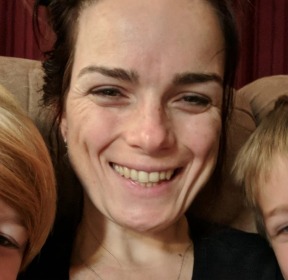
Anna
User Story
As a recently widowed, broke, and unemployed parent, I want to find a source of food so that my family can survive.
Occupation: Unemployed
Age: 39
Gender: Female
Race: Caucasian
Children: 2 Sons
Marital Status: Widowed
Education: Completed 10th Grade
Income: $150,000 per Year
Value Traits
- Loving mother
- Hard-worker
- Lonely
- Stressed
- Worried
- Sad
- Hopeful
- Hungry
- Helpless
Bio
Anna is a widower with two boys who is currently unemployed with little to no prospects. She is struggling just to survive and take care of what remains of her family.
Her family is recently broke and extremely food-insecure. She is normally is outgoing, but is nearing nervous breakdown from her multiple hardships and can’t seem to find a path out of her conundrum.
Needs, Motivations, or Frustrations
- Lost her husband unexpectedly this year due to Covid-19.
- Lost her job as a waitress due to the shutdowns.
- Having trouble finding employment, which is further hindered by the fact that she must attend her kids while they are having to remote learn from home and her vehicle is inoperable.
- Has bills piling up and is essentially broke.
- Currently avoiding eviction with current government mandates in place amid the pandemic.
- Is not able to adequately feed her family.
- Waiting on pending outcome of assessment for eligibility to receive food-stamps.

Chasity
User Story
As a self-employed food-delivery service driver I want to donate deliveries to help feed the hungry as well as to have additional tax write-offs so that I can reduce my high tax-burden in order to make my self-employment terms more economically viable.
Occupation: Food-delivery driver
Age: 26
Gender: Female
Race: Caucasian
Children: None
Marital Status: Single
Education: B.A. Social Work
Income: $32,000 per year
Value Traits
- Hard-working
- Intelligent
- Motivated
- Giving
- Thankful
- No-nonsense
- Caring
- Compassionate
- Social advocate
Bio
Chasity is a single mom and a recent college graduate who is making ends meet driving for Grub-Hub, Uber Eats, and Postmates until she finds a job in her trained field.
She is a very compassionate person, who while is somewhat struggling financially, still looks for ways to support those less fortunate than she.
Needs, Motivations, or Frustrations
- In working for the various contemporary food-delivery services, she is technically self-employed therefore is 1099 for tax purposes.
- This is one of the most taxed categories, so she has to pay much greater proportion of her earnings than a normal employee and this is putting a significant burden on her ability to provide for her family.
- To reduce this burden, she seeks to find every way or opportunity for write-offs to lessen what is able to be taxed.
- She has a charitable streak and constantly looks ways to actively give back to those less fortunate in the community with her time and efforts.

Balu
User Story
As a Restaurant Owner, I want to find ways to reduce or recoup operational costs like being able to write off donated excess food from our taxes to save money and to help feed those affected by hunger, especially during this pandemic.
Occupation: Restaurant Owner
Age: 32
Gender: Male
Race: Mexican-American
Children: 1 Son and 1 Daughter
Marital Status: Widowed
Education: High School Grad.
Income: $150,000 per year
Value Traits
- Very creative
- Millennial
- Extrovert
- Entrepreneurial
- Risk-taker
- Caring
- Sociable
- Self-made
- Tech-savvy
Bio
Balu is a self-made restaurateur. He started as a bus-boy and worked his way up. He now owns several restaurants that he designed & started.
He’s constantly coming up with new restaurant concepts and is constantly looking for ways to optimize his operations, cut costs, and innovate.
Needs, Motivations, or Frustrations
- Has much excess food at the end of each of his restaurants’ shifts throughout the day and at the end of the day.
- The excess food is comprised of leftover food-prep, abandoned/incorrect orders, and almost expired foods.
- He is often frustrated at the cost of the wasted excess food going to spoil in the garbage but must follow regulations imposed on restaurants that require this kind of discard due to health codes.
- Ultimately, he would like to be able to put it to better use. Amid Coronavirus, converted his restaurant operations to a take-out model in order to keep operating.
- He needs to find more ways to recoup money to keep his restaurants afloat.
User Flows
Anna
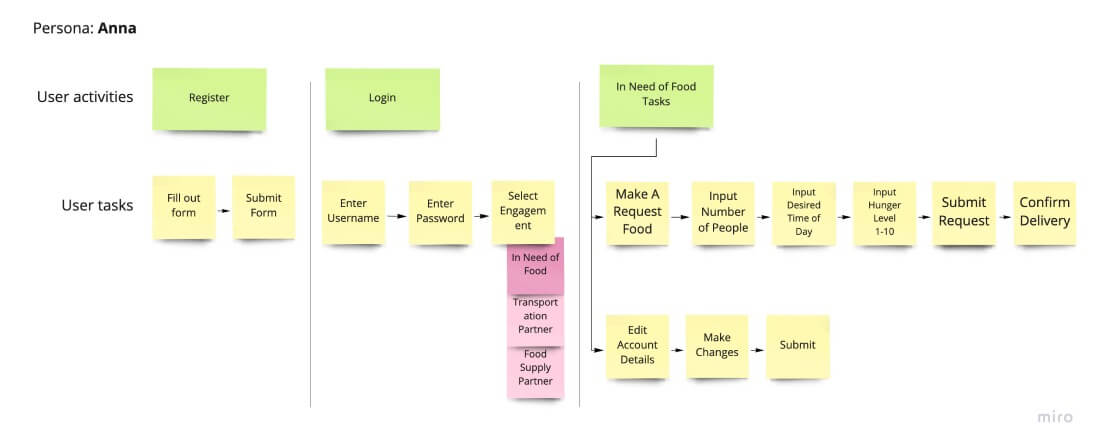
Chasity
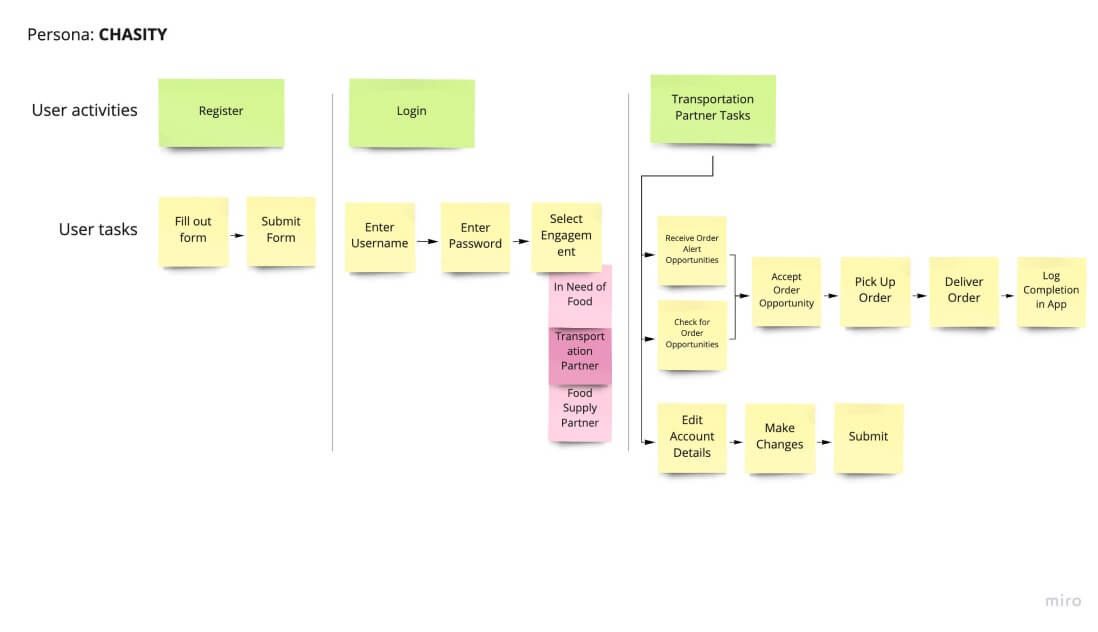
Balu
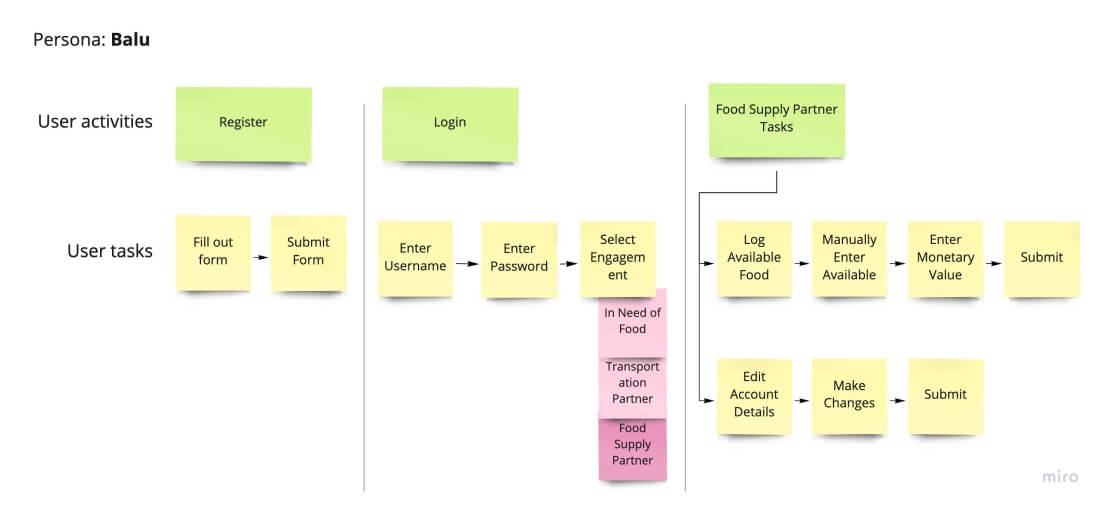
Information Architecture
Mobile App
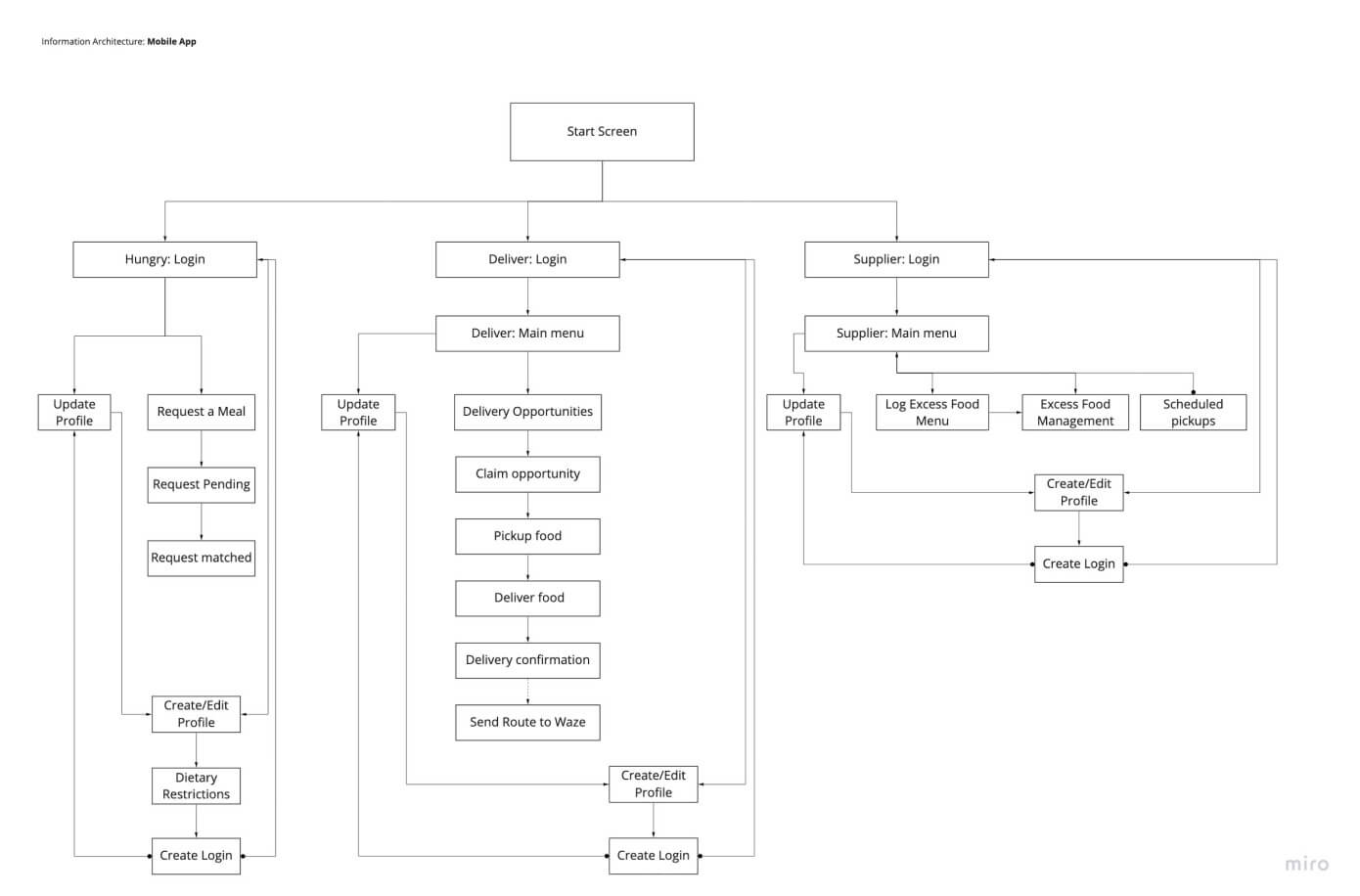
Website
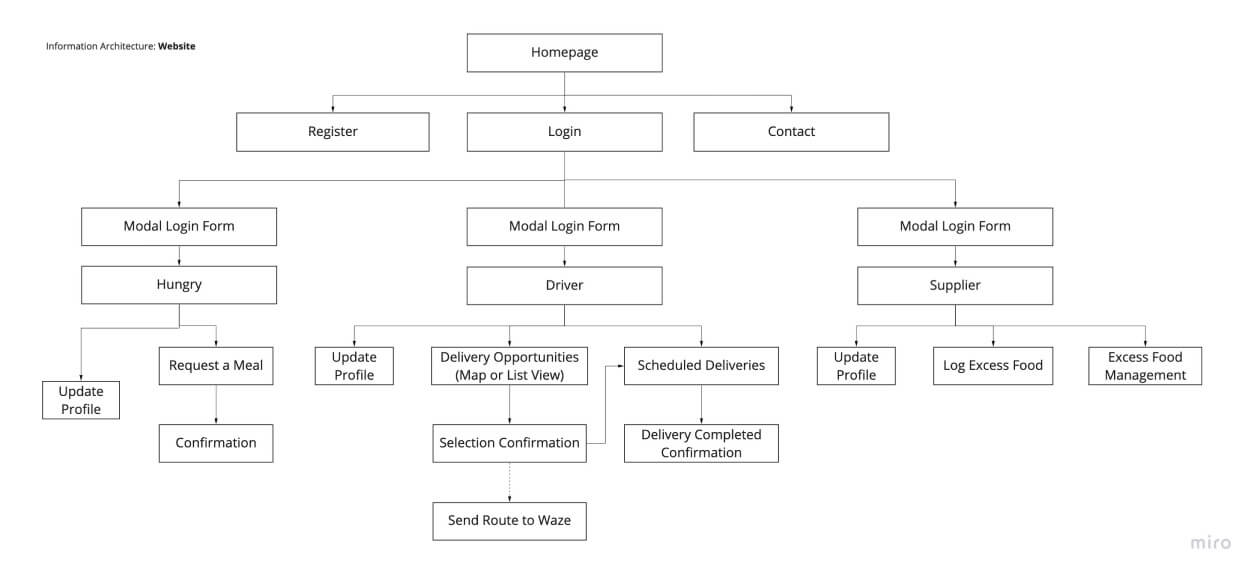
Wireframes + Prototypes
Mobile App
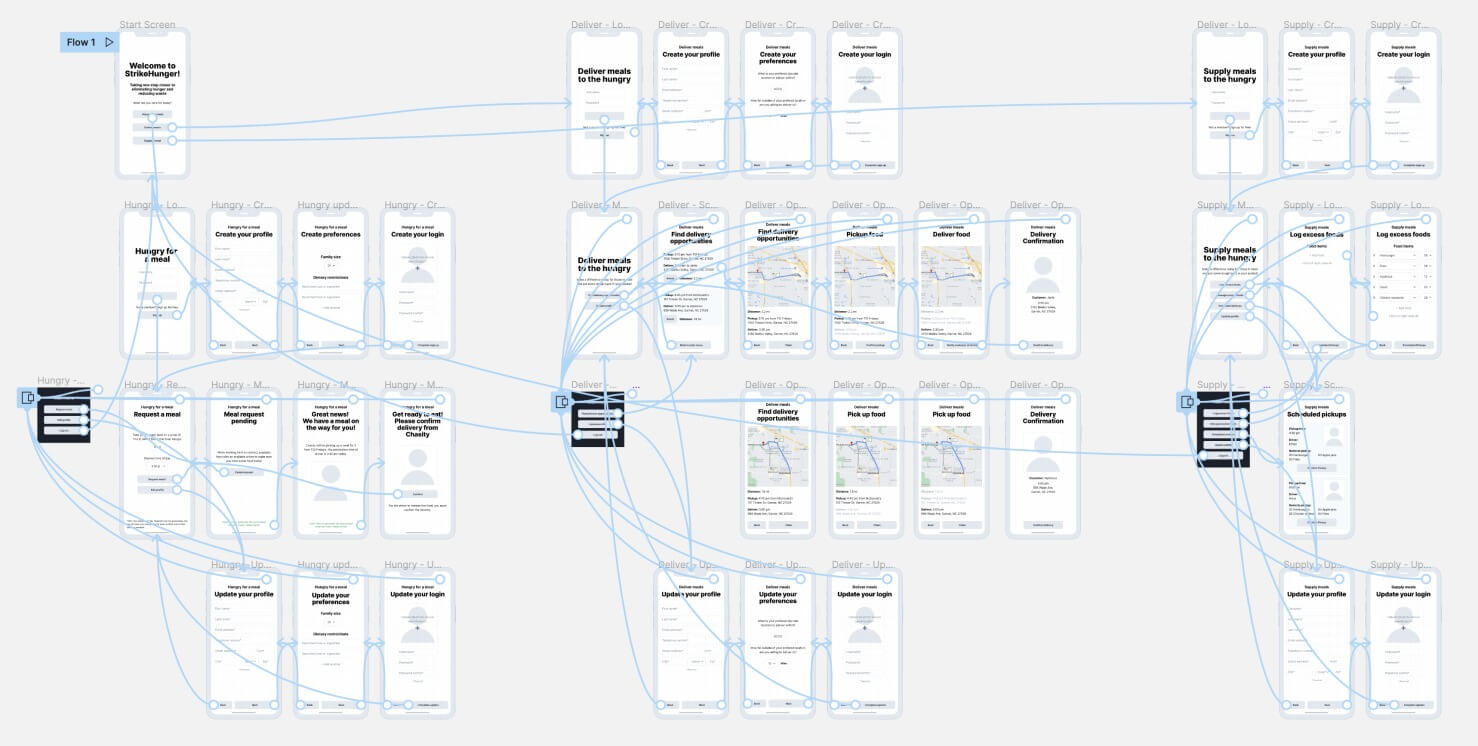
Website
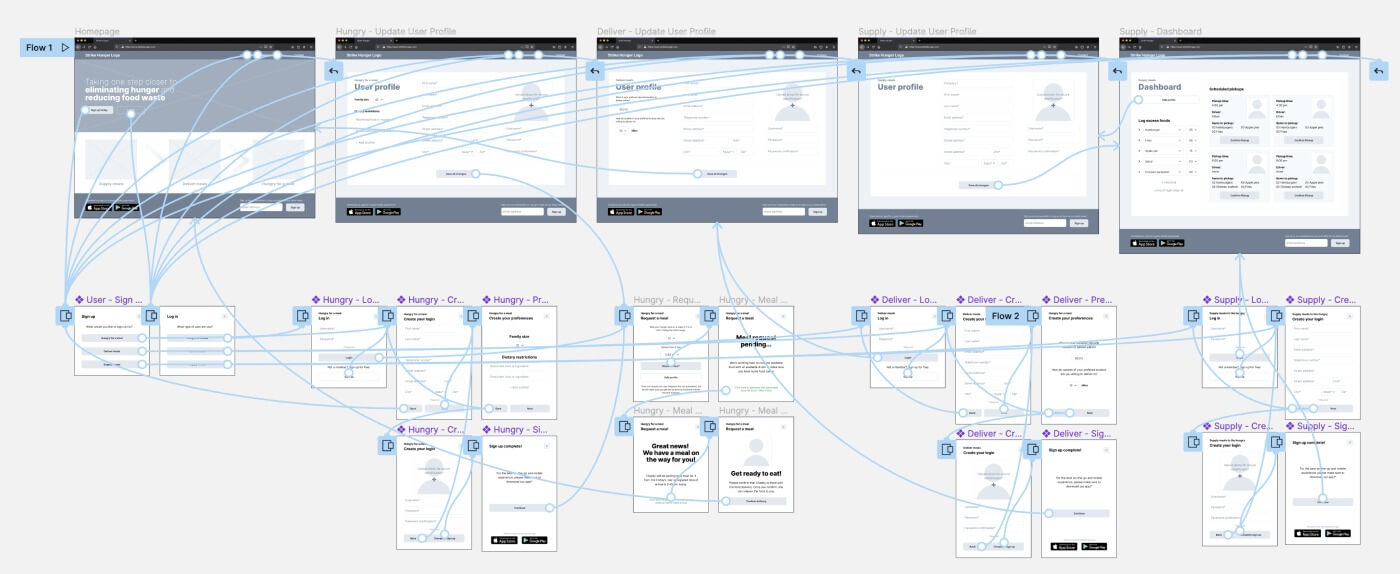
Visual Design
Identity
Logo Inspiration
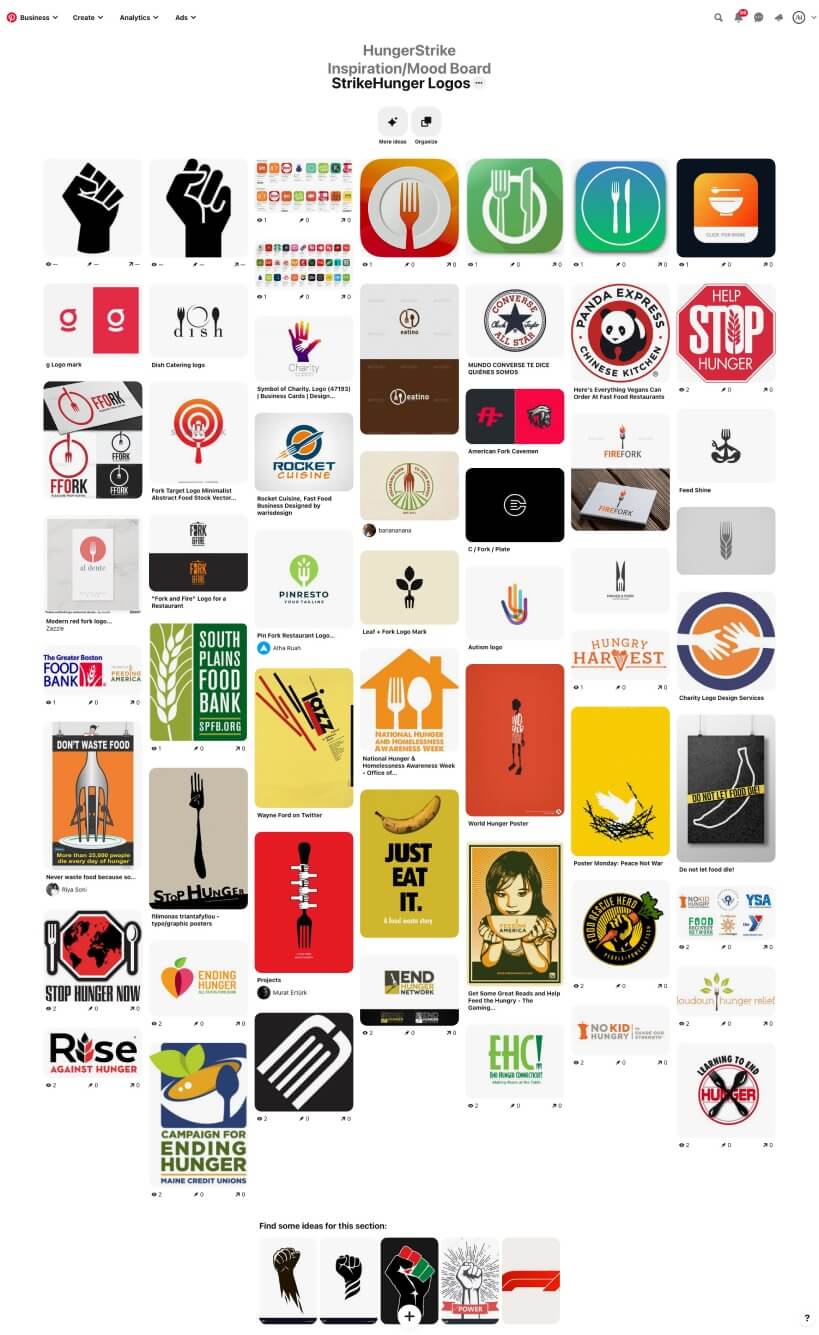
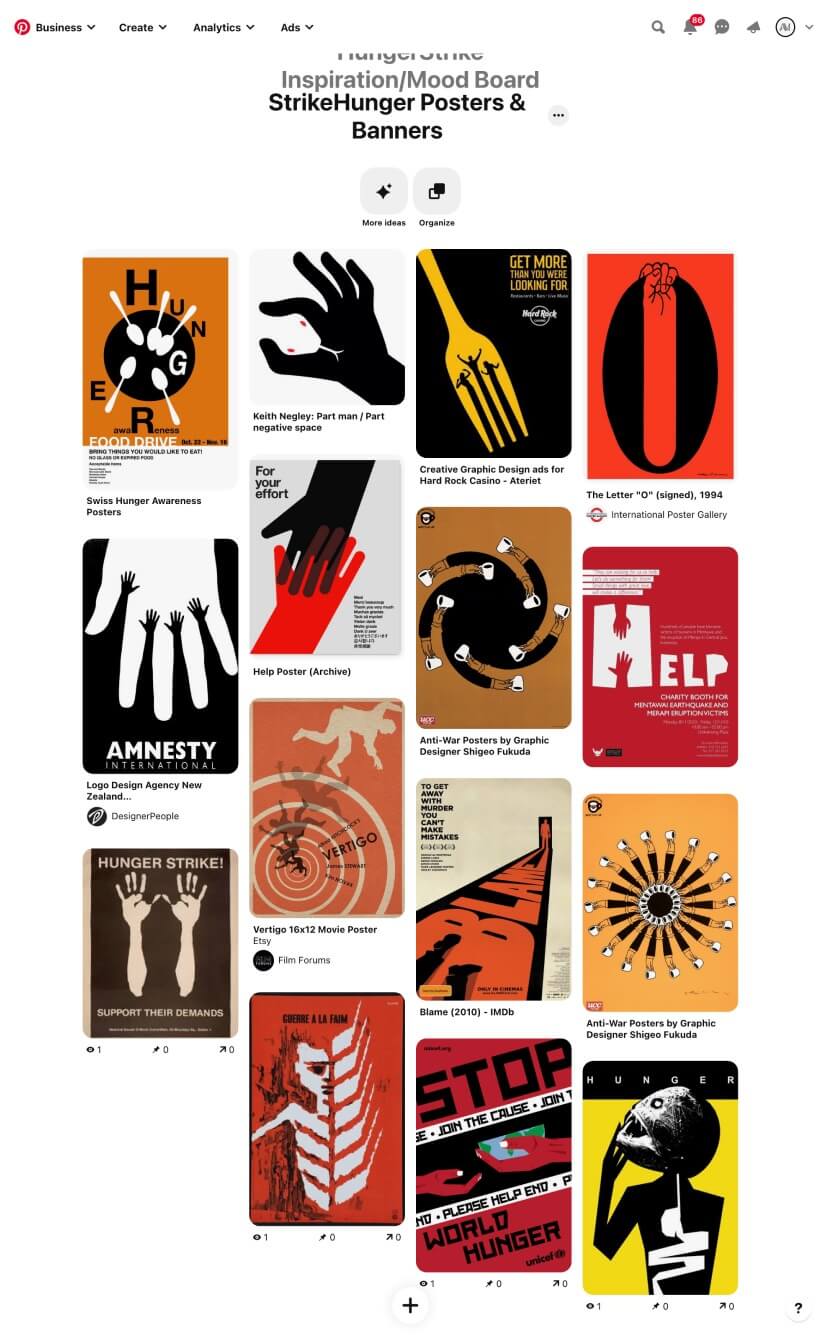
Logo Sketches

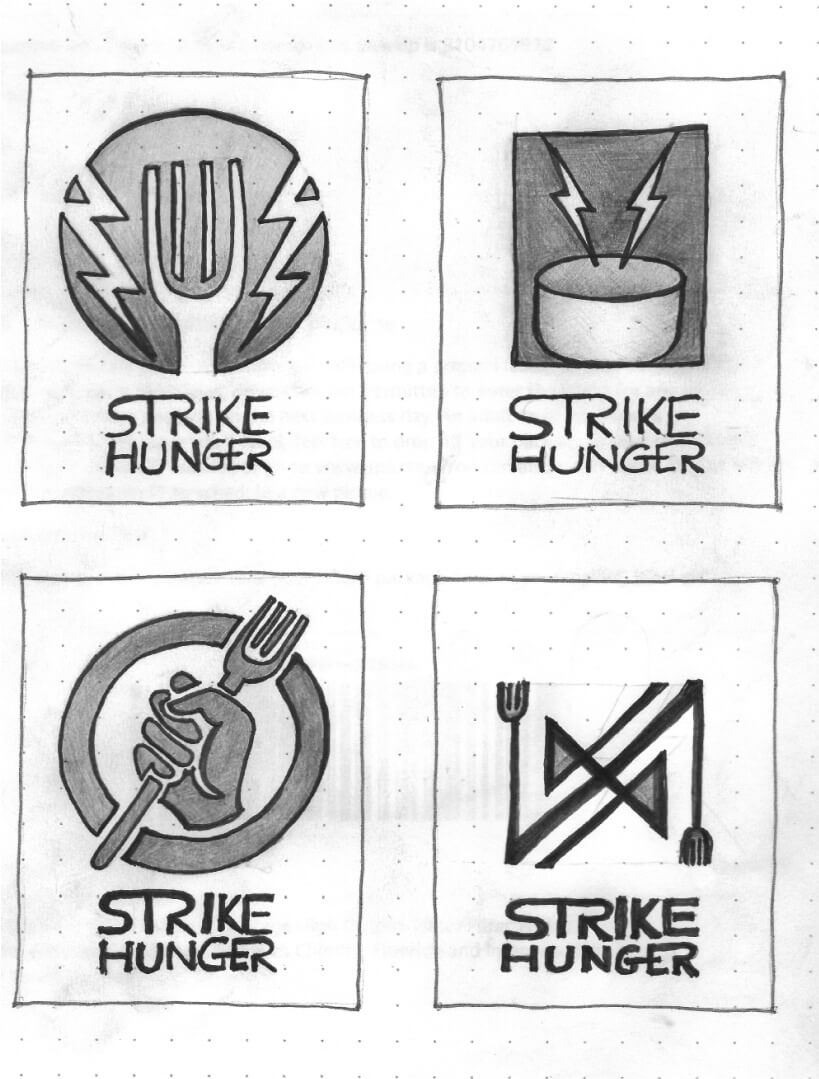
Logo Final
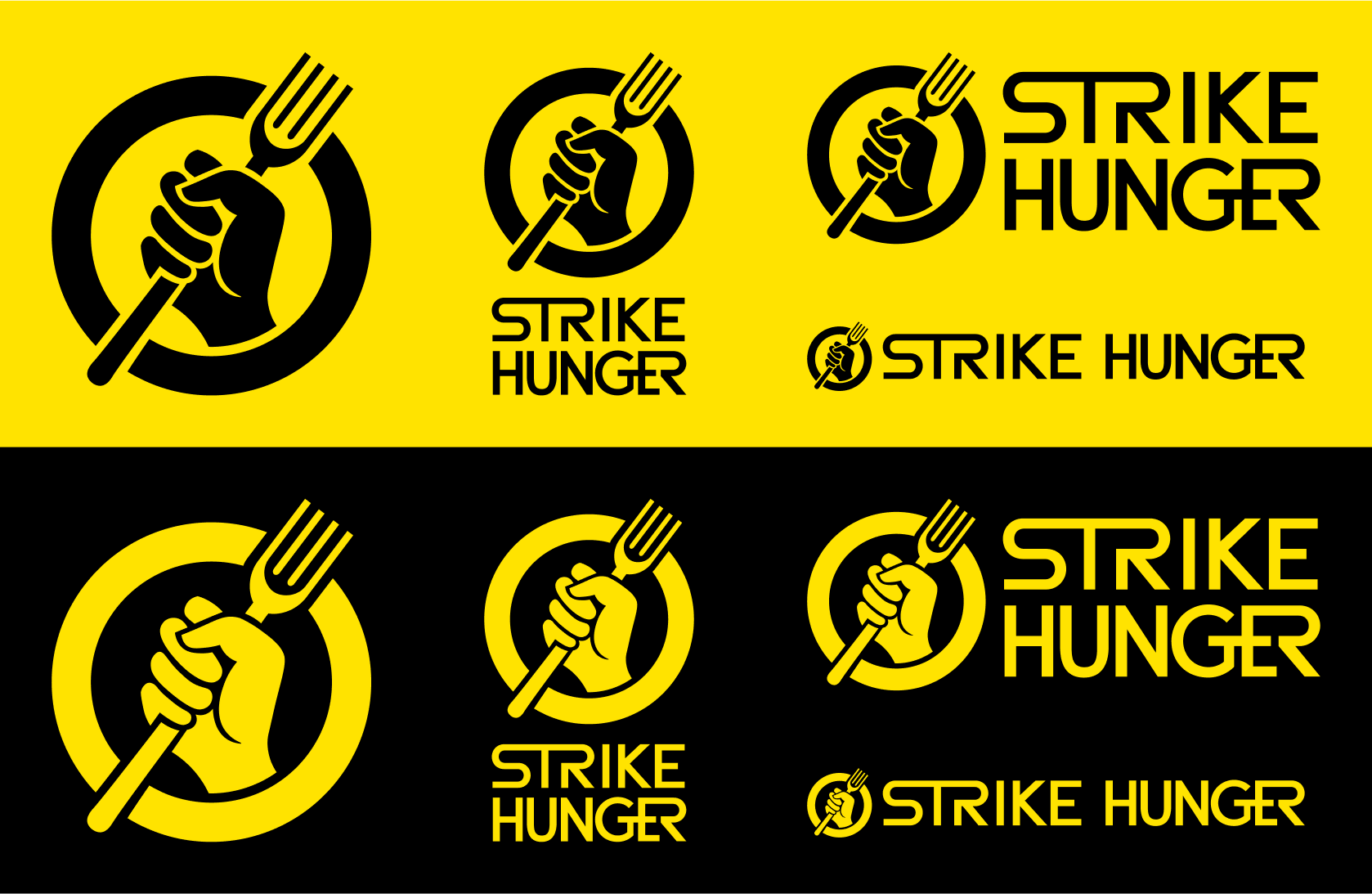
UI Mockups
Mobile App
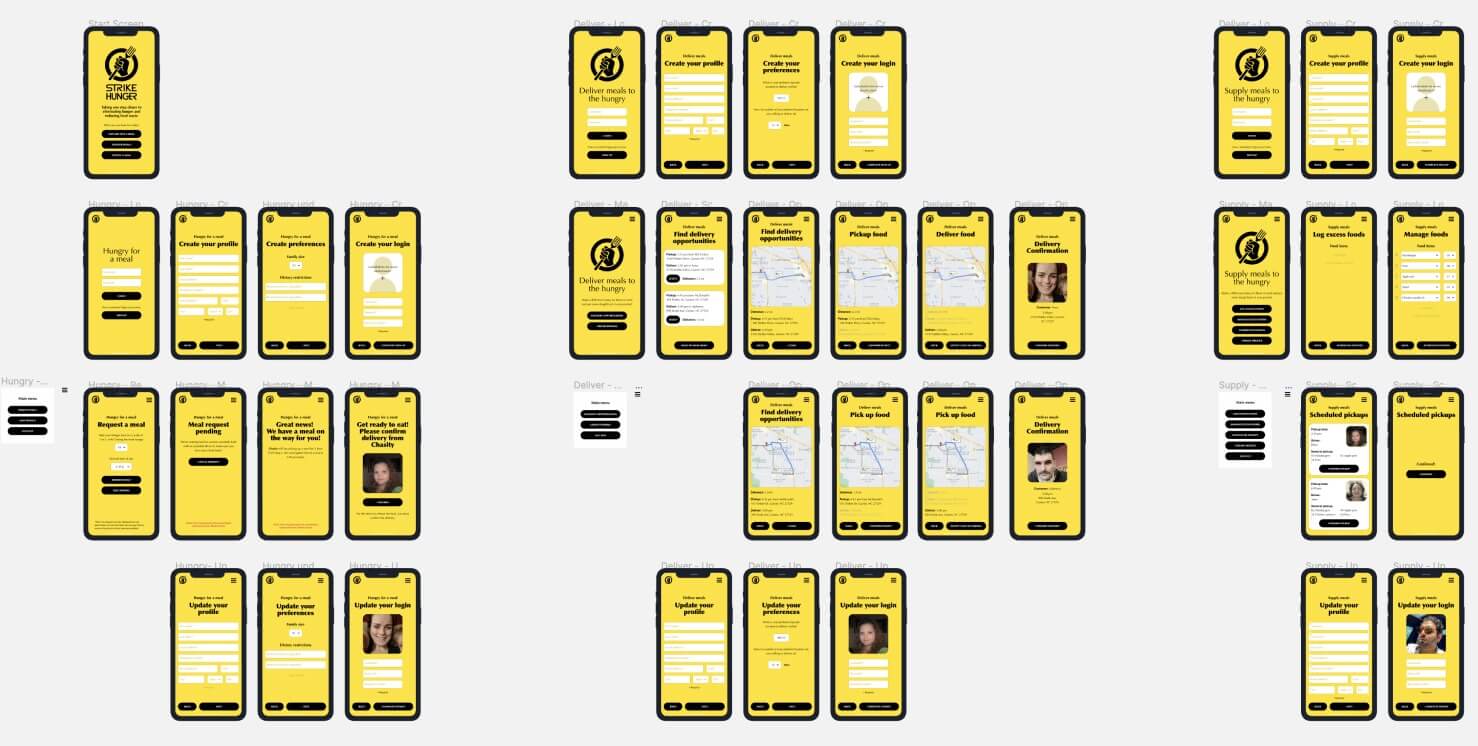
Website
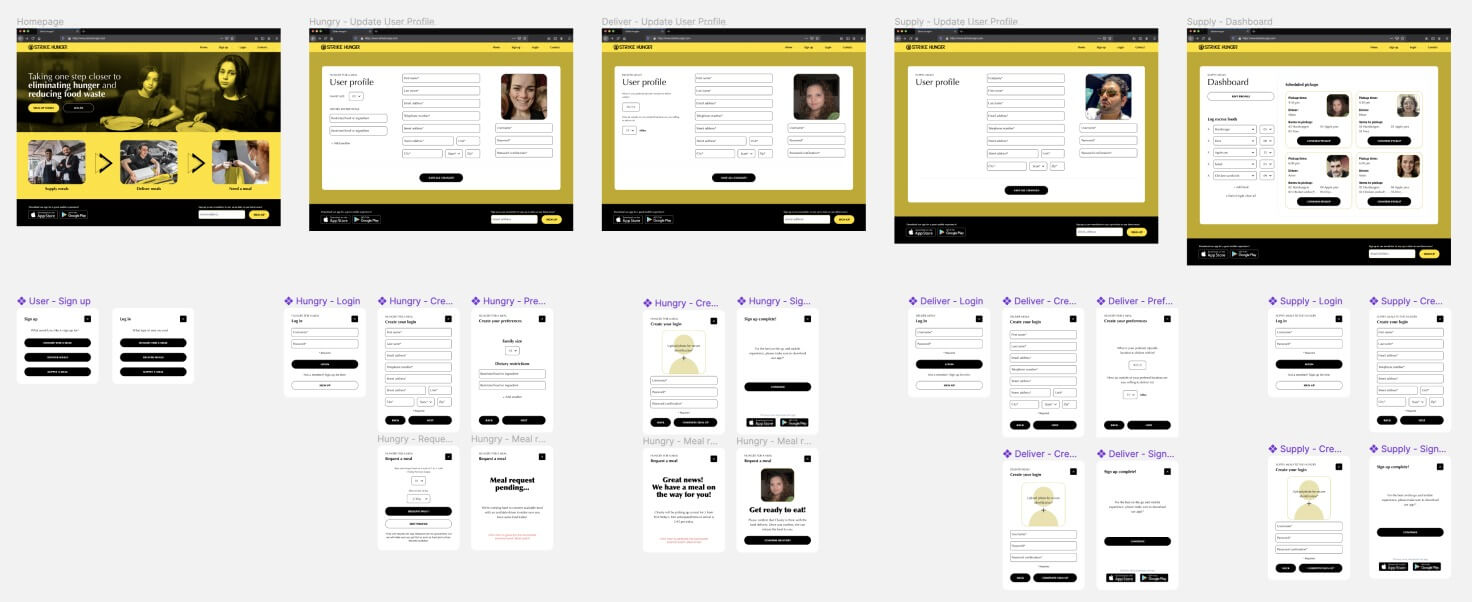
Hifi Prototypes
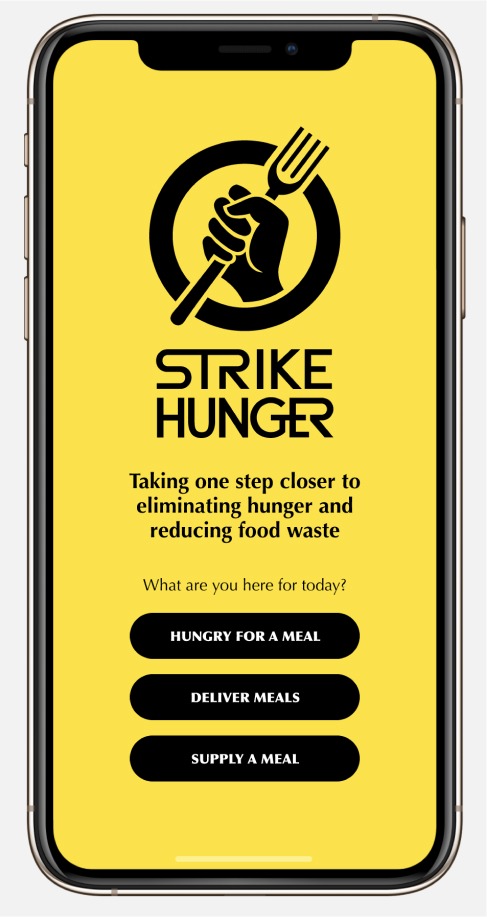
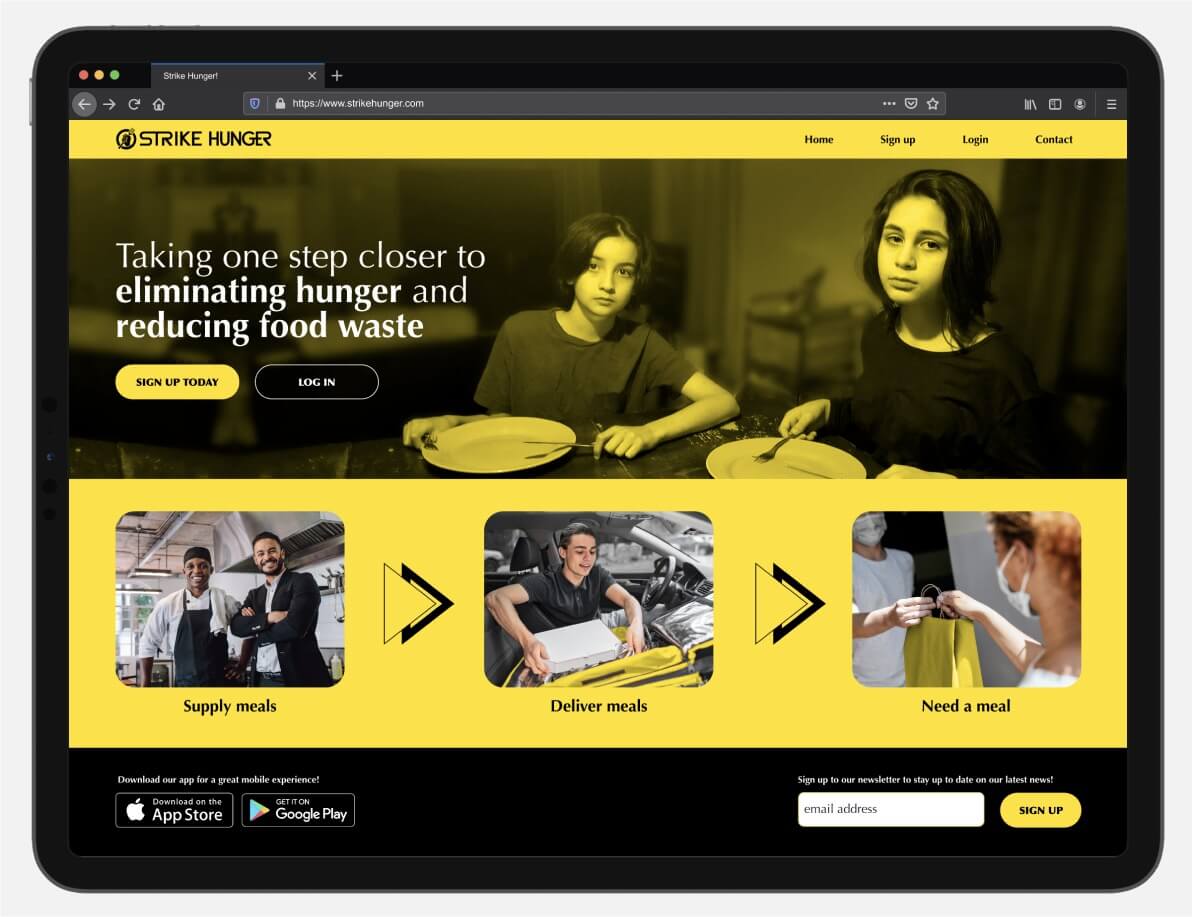
Marketing Design
Magazine Ad
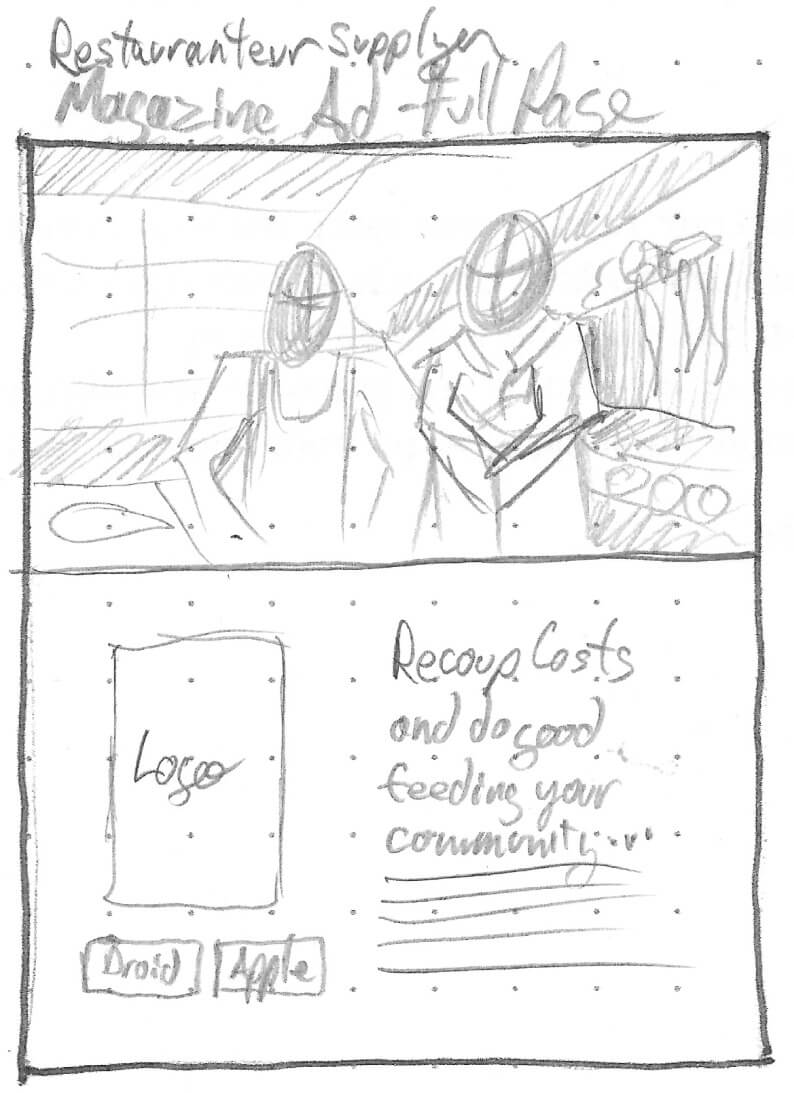
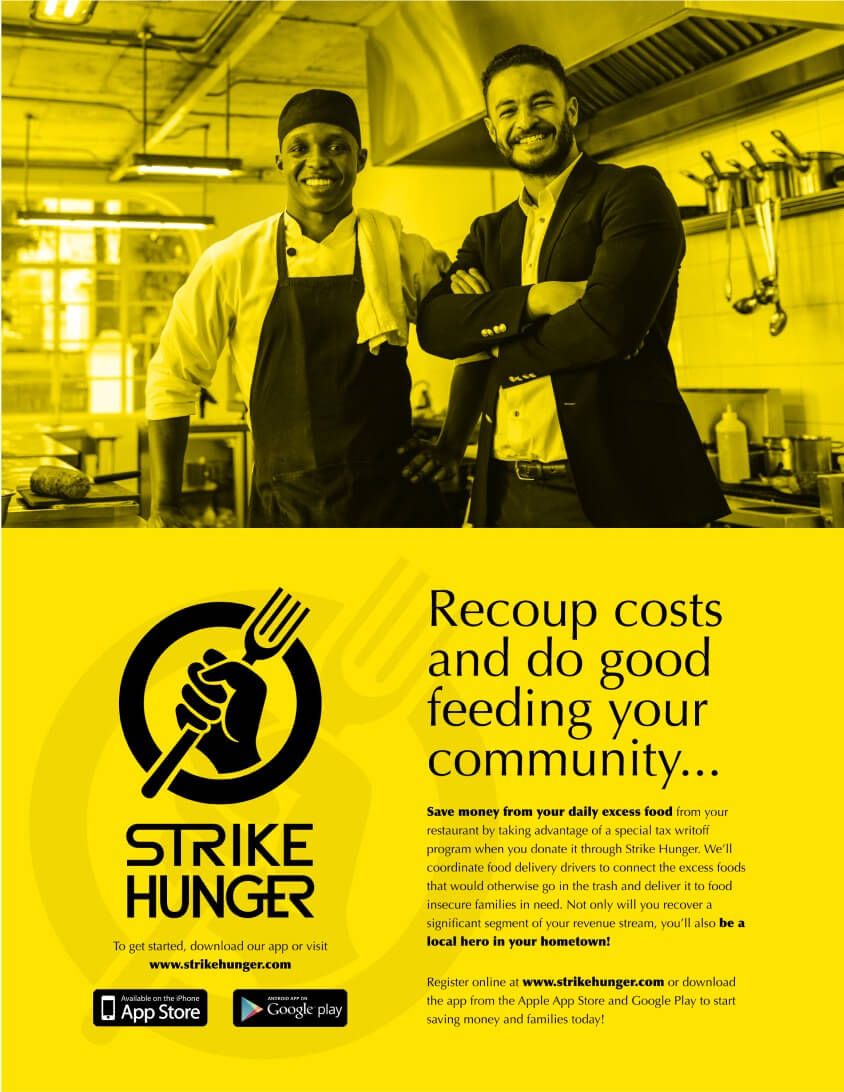
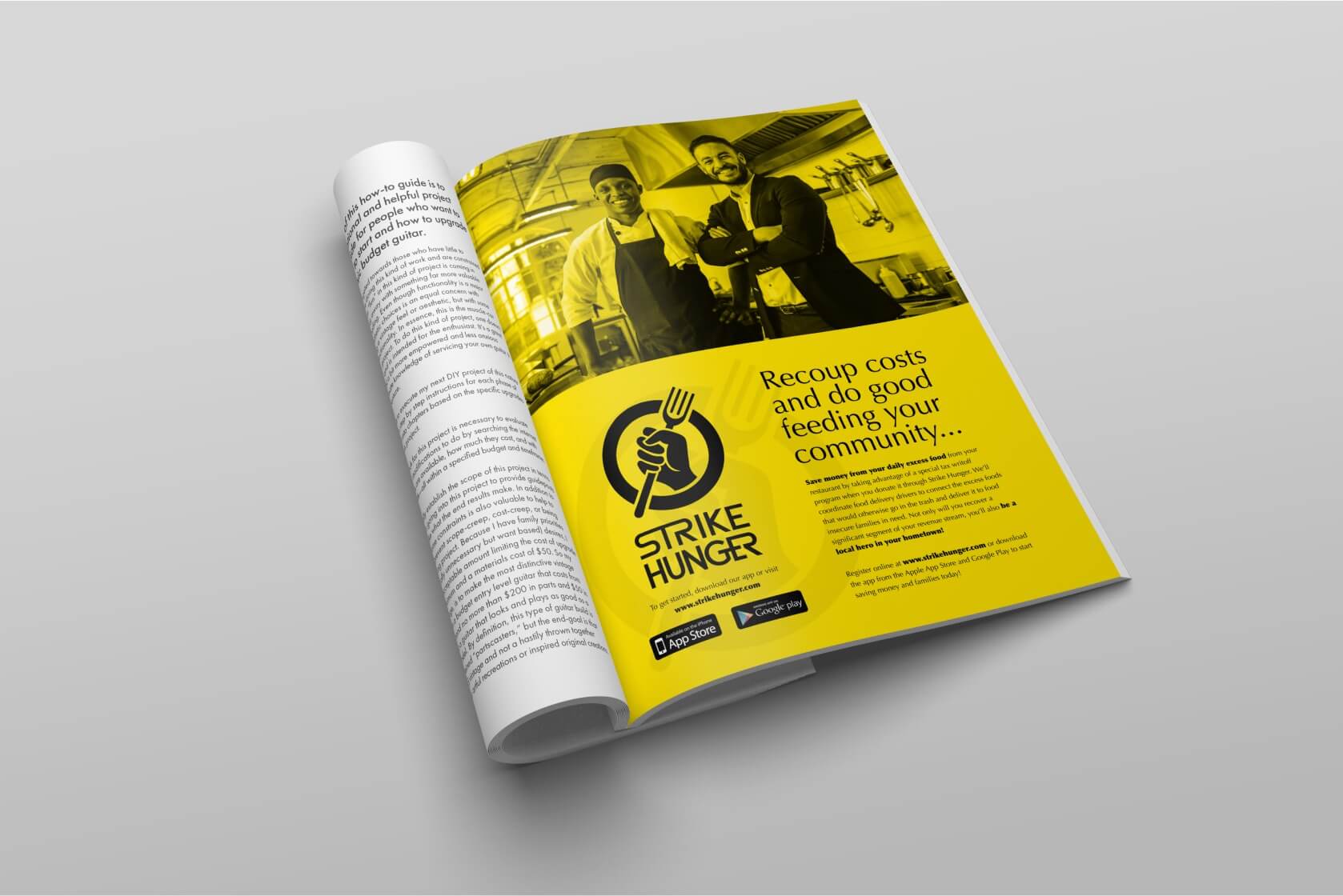
Billboard
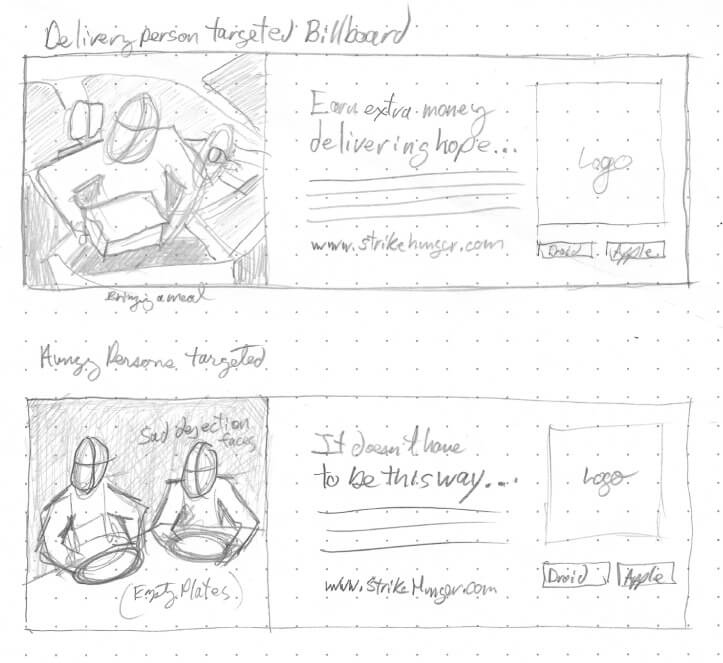
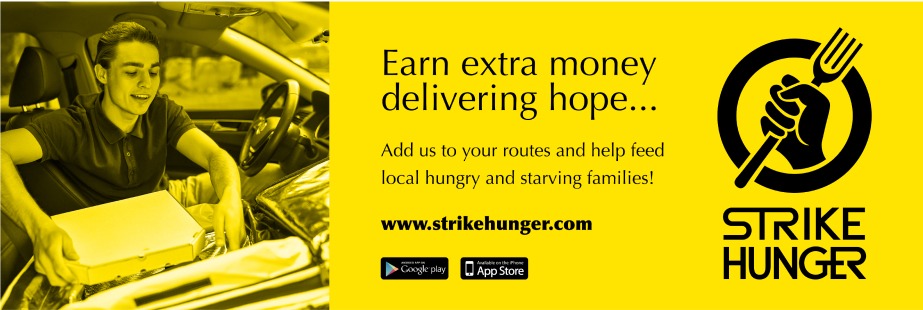
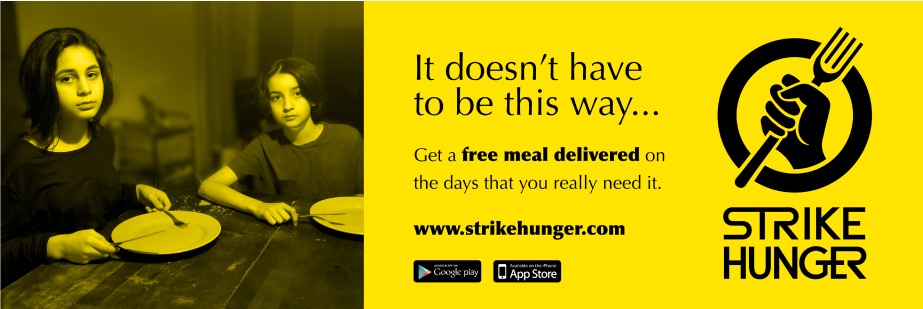
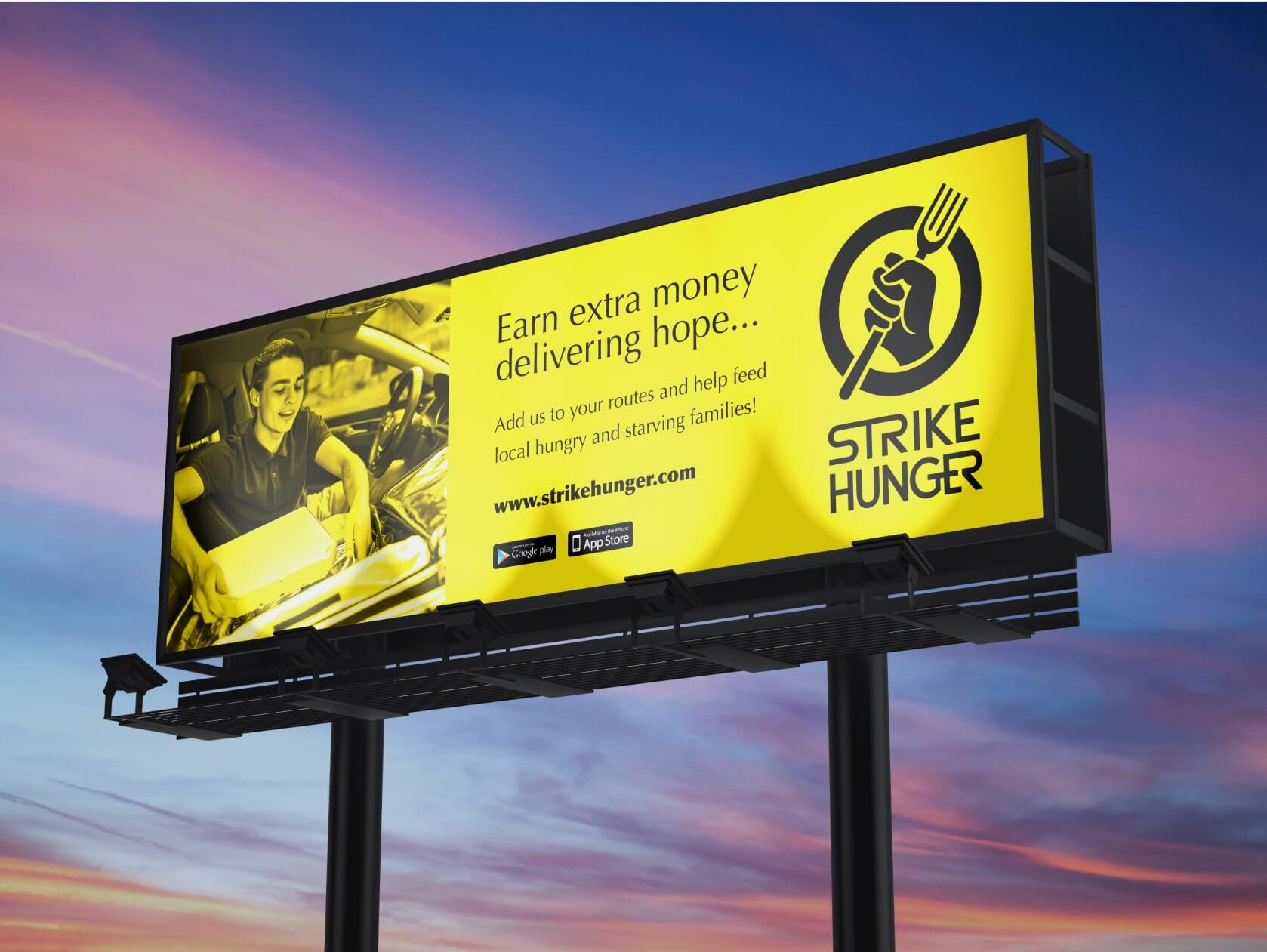
Mass Transit Ads
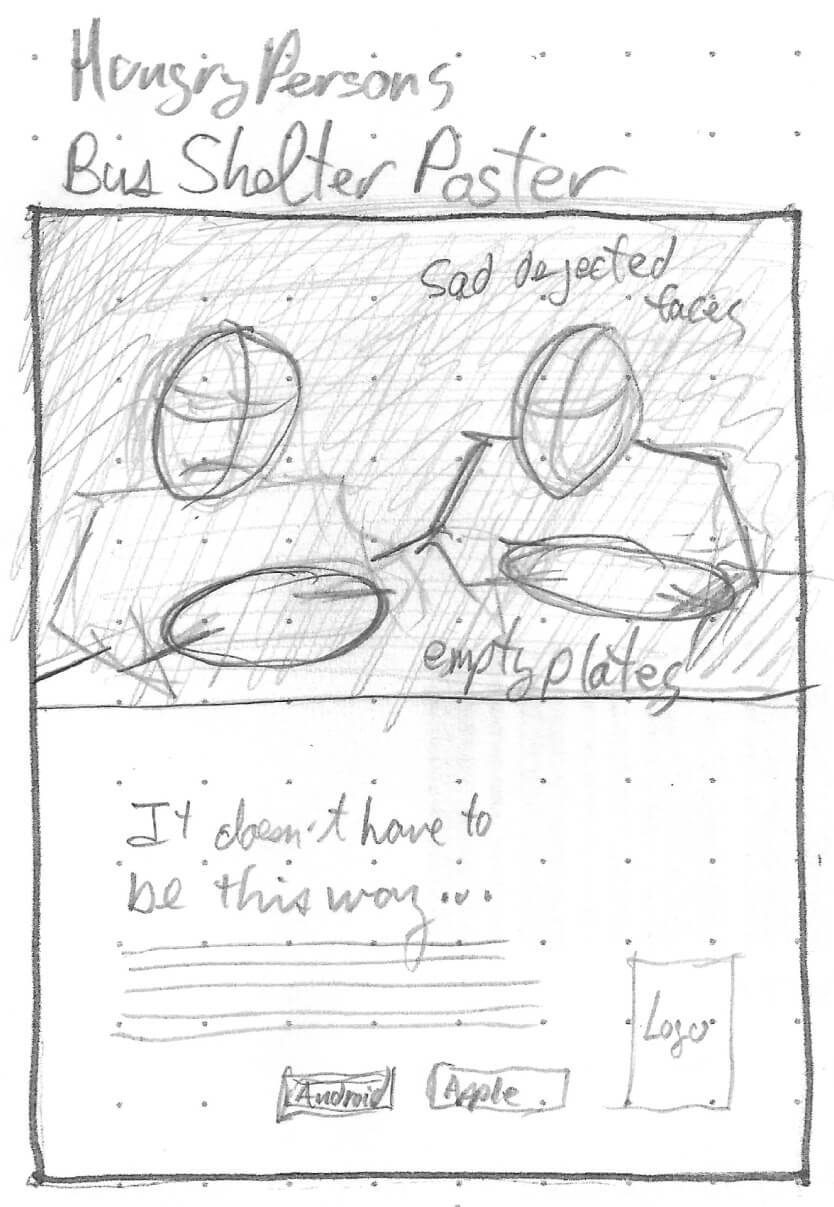
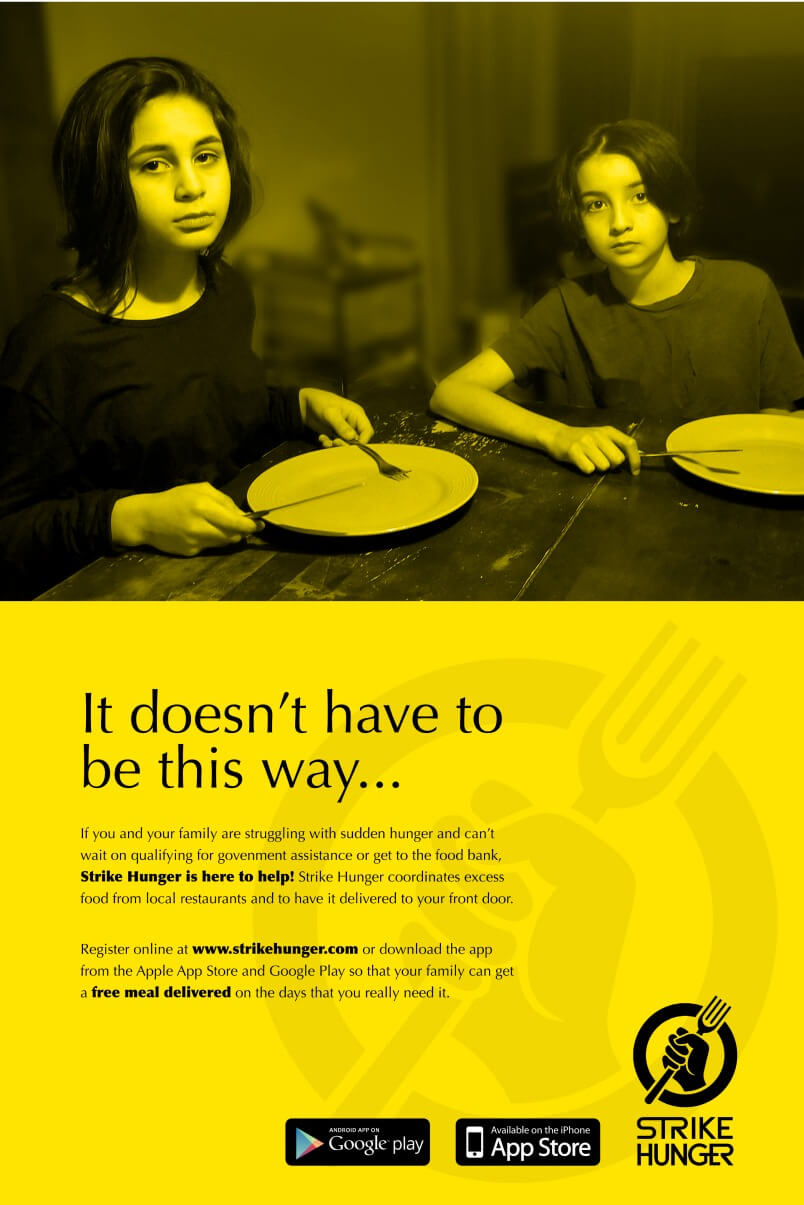
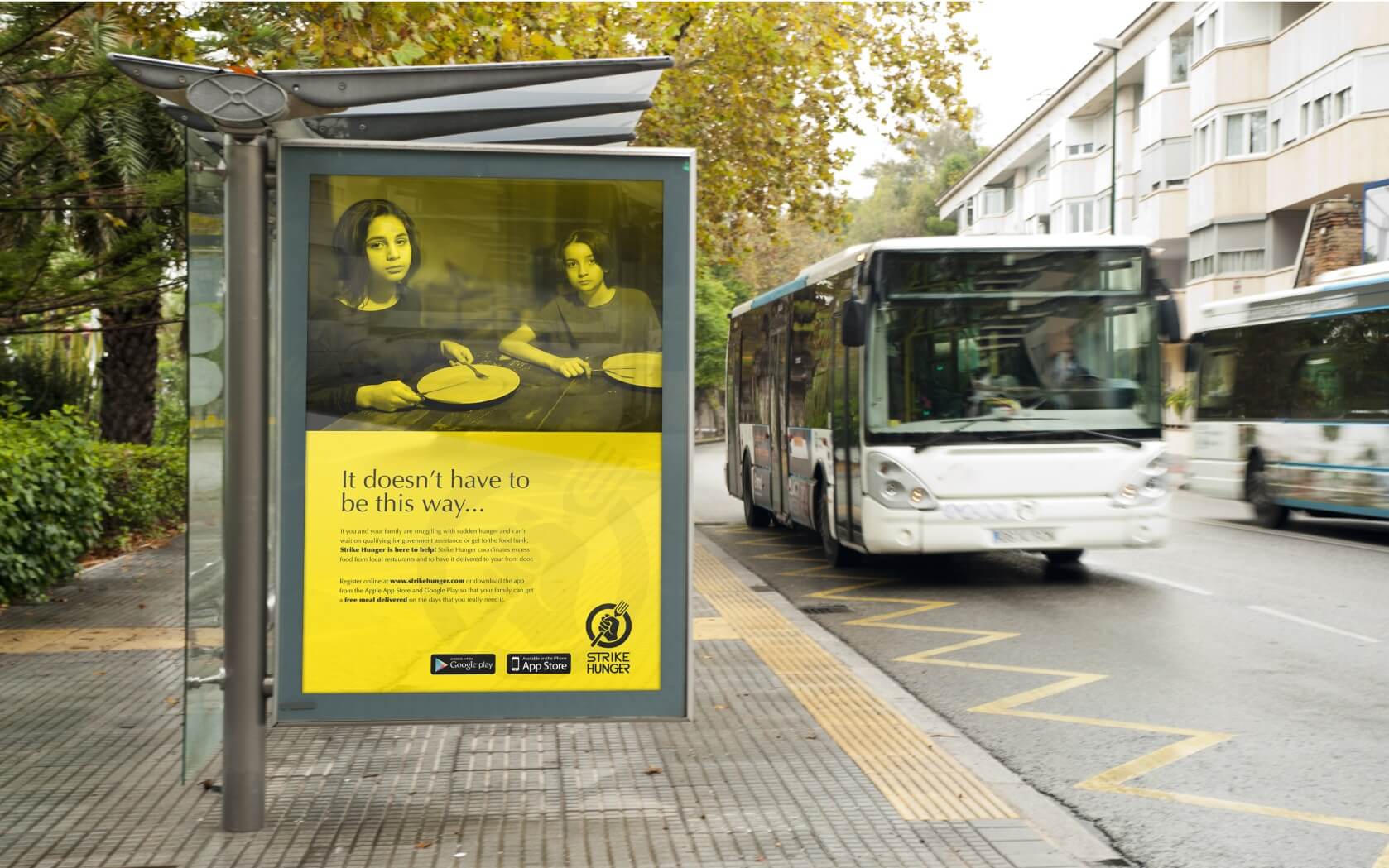
Vehicle Decal
